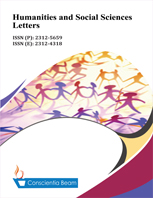The role of multiple directorships in minimizing idiosyncratic risk due to the presence of large shareholders: Evidence from Indonesian companies
DOI:
https://doi.org/10.18488/73.v12i2.3690Abstract
This study aims to evaluate the role of multiple directorships in the relationship between large shareholders and idiosyncratic risk in Indonesian companies for 2017-2021. The study model included dynamic panel data for estimation and a two-step GMM system to address endogeneity issues. Multiple directorships and long-term shareholders have low-frequency data whereas idiosyncratic risk is associated with high-frequency data. The robustness test employed the Fama-Frenchhee factor model while the single factor model was used to evaluate idiosyncratic risk. Indonesia adheres to a two-tier system that separates the roles and functions of the board of directors and the board of commissioners. Furthermore, the concentrated ownership structure of Indonesian companies can cause agency problems between large and small shareholders. The study results show that large shareholders can strengthen the relationships of busy directors to reduce idiosyncratic risk. As a result, this research recommends increasing the role of multiple directorships in monitoring and predicting business conditions internally and externally to minimize interference from large shareholders which can cause expropriation due to agency problems.

